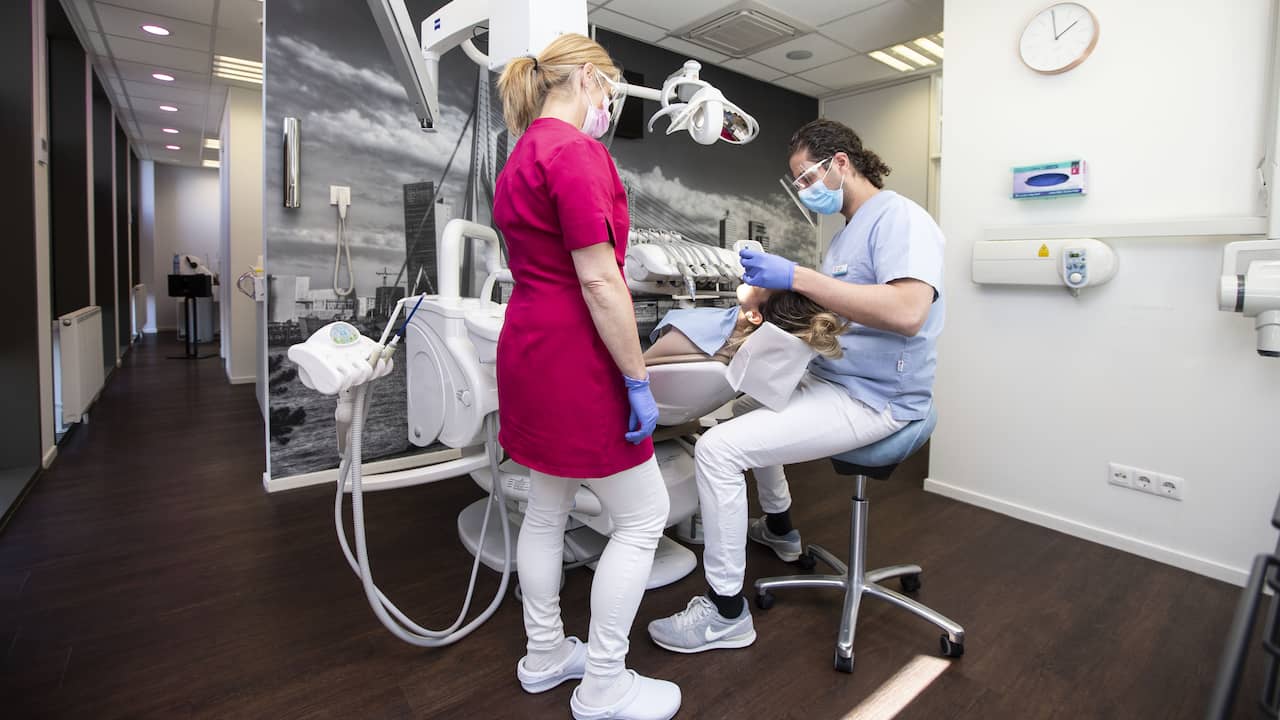Patient stops are increasingly used in local healthcare. Not only general practitioners sometimes have to (temporarily) say no to new patients, dental practices are also often too busy. “We need to look at the way we provide care.”
According to the Nivel research institute, the number of patient stops in general practitioner care is increasing. Figures for this year are not yet available, but last year 58 percent of the general practitioners surveyed said they would not accept new patients for a while. In 2018, this still applied to 48 percent. In that year, almost half of the practices expected to have a shortage of general practitioners within a year. But last year almost all practices thought so.
The National Association of General Practitioners (LHV) sees patient stops “definitely in more places”. According to the organization, this is the result of a national shortage of general practitioners and support staff. Every year, around eight hundred doctors start a GP training course, while the Capacity Body has calculated that there must actually be almost twelve hundred.
These almost twelve hundred doctors are also needed to meet the growing demand. “GP care has become more complex,” says a spokesperson for the LHV. “People stay at home longer, live longer and often have multiple conditions.”
Wat is een patiëntenstop?
Bij een patiëntenstop kan een patiënt zich niet meer inschrijven bij een praktijk. Soms wordt een uitzondering gemaakt voor bijvoorbeeld partners of kinderen van mensen die al bij de praktijk staan ingeschreven.
For a GP from Venlo to The Hague
Hedwig Vos, general practitioner and head of general practitioner training at the LUMC, also sees this. “As general practitioners we have more to do per patient.” This is partly due to waiting lists in other places, including mental health care and hospitals. “People stay with us longer, so we have to spend more time on that.”
The patient stops and waiting lists are not only annoying because patients have to wait (sometimes for a long time) for the necessary care. It also has practical consequences: people have to travel far after a move or cannot change GPs if they want to.
For example, Vos works in The Hague, but she has patients who live in Venlo. “GPs have an enormous spread of patients. We invest in collaboration within the neighborhood, but an increasing number of our patients no longer live in our neighborhood. I know the nurses, the physiotherapist, the social workers here. I know the district in Venlo. Network care is so important now that people have more complex problems.”
‘Trend will continue in the coming years’
Not only general practitioners suffer from this problem. They also see patient stops and waiting lists elsewhere in healthcare. According to the professional organization KNMT, there are dental practices throughout the Netherlands that are temporarily not accepting new patients. “This trend will only continue in the coming years,” says KNMT chairman Hans de Vries. About 240 dentists are added every year, while about 300 stop working.
“Huge waiting lists are no longer an exception,” says De Vries. “That worries us very much: patients are forced to wait, will have to travel further to receive oral care or, in the worst case, will be deprived of it.”
Mental health care has been struggling with long waiting lists for years. For the three diagnosis groups with the longest waiting time, people have to wait an average of 27 weeks, it shows Numbers of the Dutch mental health care. That is much longer than the agreed maximum waiting time of fourteen weeks. Despite many efforts, waiting lists are getting longer.
Sanne Oving is binnenlandverslaggever bij NU.nl
Sanne volgt voor NU.nl grote binnenlandse thema’s, zoals zorg en asiel.
Better balance between what we ask for and what care can do
Healthcare organizations are busy solving the shortages in their own sector. In addition, the associations of general practitioners and dentists argue for additional training places and a better distribution of these training courses across the country.
We also need to look at the way we provide care, says Vos. For example, GPs have been “quite successful” in making care as accessible as possible. Maybe even a little too much. “Is everything possible that people want? For example, you notice at the GP post that people ask questions that do not necessarily belong there.”
In general, a balance must be struck between the care we ask for together and the care that our healthcare professionals can provide, says Nynke Scherpbier. She is professor of general medicine at the University of Groningen. “It is hard work to bring this more into balance and it sometimes takes courage to stop inappropriate activities.” According to Scherpbier, this must happen at all levels: “So from patient to health insurer and from general practitioner to hospital.”
“We hope that waiting times around us will be shortened and that capacity will increase,” says Vos. She emphasizes that the GP profession is still “really fun”. “It’s nice if we can organize it in such a way that we can continue to do it.”
2023-11-16 10:40:46
#increasingly #find #standing #front #closed #door #dentist #general #practitioner #area #Domestic


